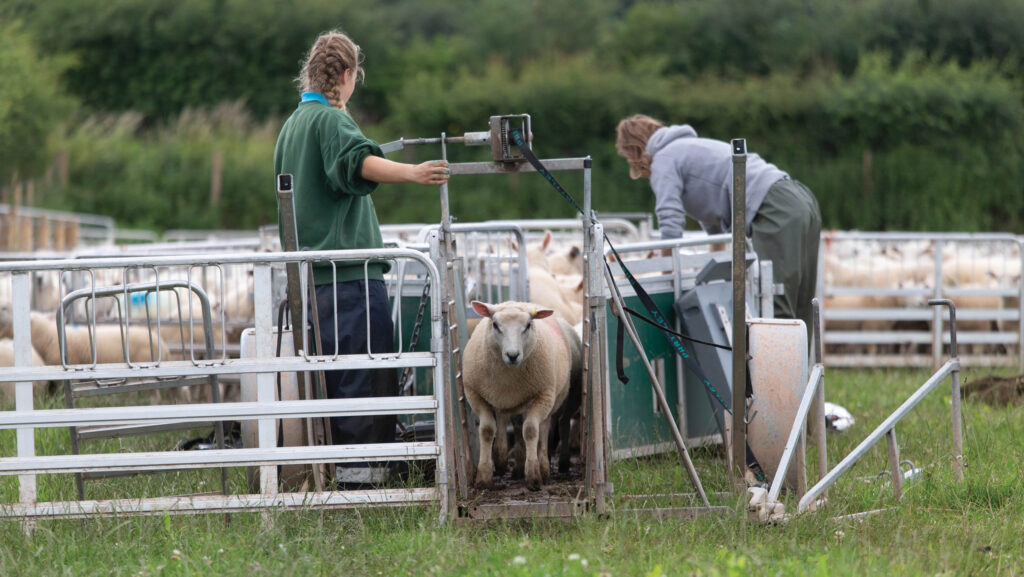Sheep vaccination protocols prove their worth in farm trial
 © Tim Scrivener
© Tim Scrivener A structured approach to preventative vaccination in sheep has driven significant improvements in flock health, antibiotics use and cost efficiency – cutting lameness levels by 66%, among other benefits.
This is according to results from a two-year farm trial run by MSD Animal Health, in conjunction with the National Sheep Association’s (NSA’s) Next Generation initiative.
The Core Vaccination project worked with four UK sheep farms of varying size and management style and aimed to demonstrate the impact of implementing a “core” vaccination strategy.
See also: Sheep vaccines: 5 steps to using them effectively
This was based on a national framework recommended by the National Office of Animal Health (Noah) on flock performance, disease prevalence and antimicrobial usage, explained MSD veterinary adviser Monika Ptaszynska.
From policy to practice
The Noah white paper categorises sheep diseases into two key tiers.
Category one includes clostridial diseases, lameness (notably foot-rot), toxoplasmosis, enzootic abortion and pasteurellosis – conditions considered widespread and controllable using preventative vaccination.
Baseline data from the four trial farms revealed that uptake of these vaccines was patchy.
All were routinely vaccinating for clostridial diseases, two were vaccinating against abortion, and one had foot-rot vaccination in place, said Monika.
Working closely with local veterinary practices, tailored vaccination plans were developed for each farm.
These focused on pre-tupping protection against abortion-causing pathogens, foot-rot vaccination at scanning, and appropriate booster schedules to maximise protection and maternal antibody transfer.
The protocols covered timings and contingencies, as the following example shows.
- Pre-tupping: vaccinate all breeding females over five months of age against toxoplasmosis and enzootic abortion prior to mating.
- Pregnancy: vaccinate pregnant ewes against clostridial diseases and pasteurellosis to protect both the ewe and her lambs, and vaccinate against foot-rot during scanning.
- Lambing: vaccinate all lambs as early as possible against clostridial diseases and pasteurellosis.
- Weaning/growing: vaccinate against foot-rot at weaning if not done during scanning. If animals were vaccinated at scanning time, a booster vaccination may be required.
If the farm experiences high incidence of pasteurellosis, a booster vaccine may be required during the growing stage.
Marked drop in lameness
Over the two-year period, significant gains were recorded. Lameness levels across the farms dropped from 6.5% to 2.2% – a 66% reduction that brings prevalence well within the industry’s 2% target.
Improvements were also recorded in other areas of the sheep industry’s Five-Point Plan for tackling lameness, particularly around treatment accuracy, quarantine protocols and vaccination uptake.
Culling policy across the four farms was more mixed but became more strategic overall.
In addition, a 25% reduction in total antibiotics use was seen over the trial period.
This showed fewer ewes required treatment when good vaccination protocols were in place, Monika said.
“It’s not about avoiding antibiotics for the sake of it, it’s about making sure they’re simply not needed.”
Financial pay-off
To explore whether full vaccination stacks up economically, researchers looked beyond the four trial farms, tapping into data from a much larger population of ewes.
A Department of Agriculture, Environment and Rural Affairs lameness study carried out across 11 farms between 2021 and 2023 put lameness losses at between £4 and £14 a ewe.
Based on these figures, the combined cost of lameness at the start of the Core Vaccination project was £187,880.
This reduced to £53,680 by the end of year two as the lameness rate fell from 5.5% to 1.8%. This equates to an annual saving of £11.42 a ewe a year after vaccination costs.
Practical training materials
As well as data, the project generated practical materials that are now being used by field teams and vets to support implementation elsewhere.
These include Five-Point Plan checklists, flock health templates and training guides.
The NSA Sheep South West event was held on 25 June 2025 at Weston Farm, East Knowstone, Devon.
